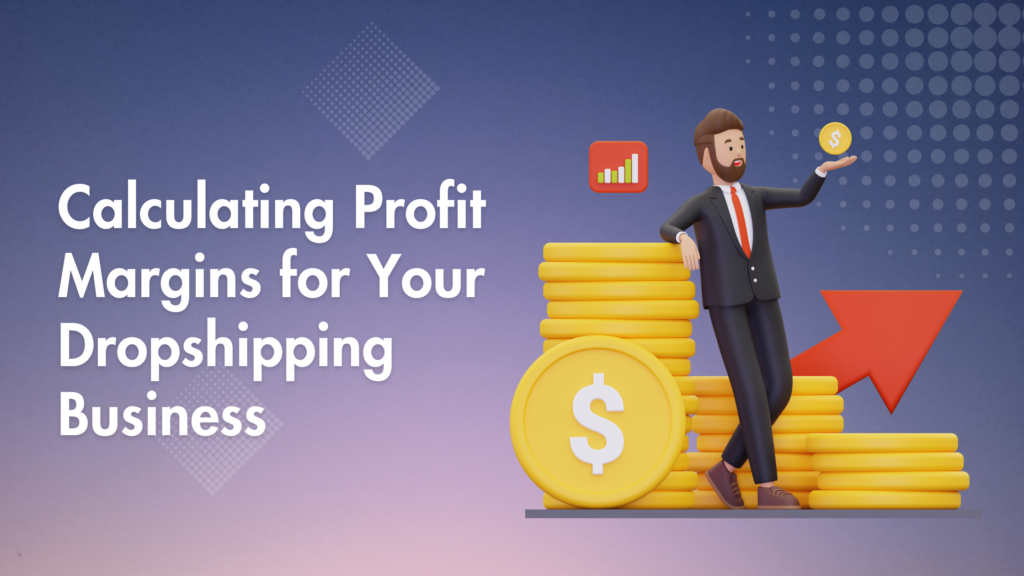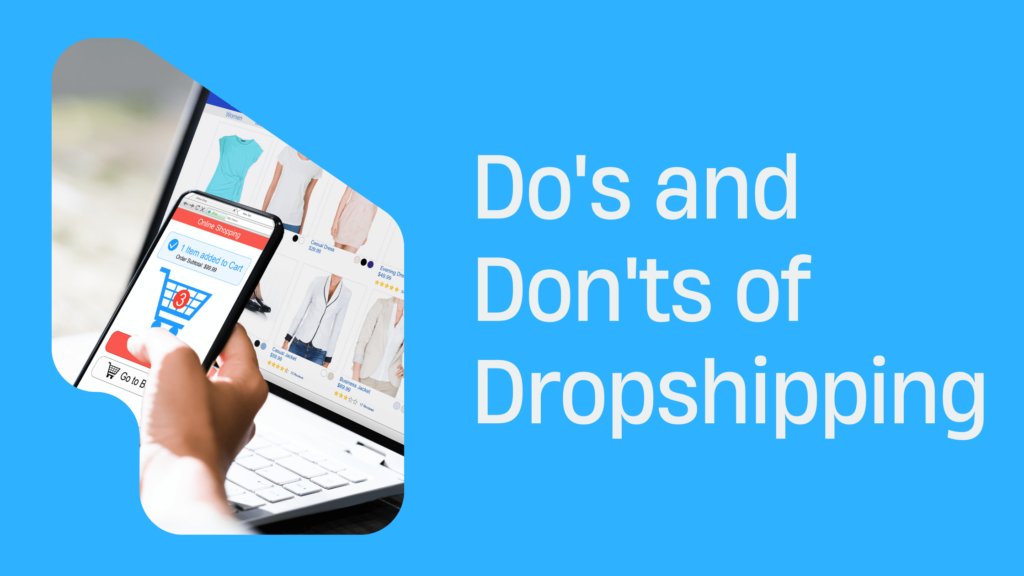Calculating Profit Margins for Your Dropshipping Business
Are you considering starting a dropshipping business but unsure how to calculate your dropshipping profit margins? Understanding the financial aspect of dropshipping is crucial for ensuring a successful and profitable venture. Pricing your products effectively and calculating your profit margins accurately are key factors in determining the success of your dropshipping business. In this comprehensive guide, we will walk you through the process of calculating your profit margins, pricing your products, and selecting high-margin products to sell online.
Why Calculating Profit Margins is Important
Analyzing your dropshipping profit margins is crucial for several reasons. Firstly, it allows you to determine whether your business is generating enough profit to sustain its operations and growth. By understanding your profit margins, you can make informed decisions about pricing, marketing, and overall business strategy. Additionally, calculating profit margins helps you identify which products are most profitable and which ones may be dragging down your overall profitability. This knowledge allows you to adjust your product offerings and optimize your business for maximum profitability.
How to Calculate Profit Margins for Dropshipping
Calculating your profit margins for dropshipping involves a simple formula:
[Supplier Price * Your Margin(%)] * Number of Sales Per Month = Profit Margin
To calculate your profit margin, you have to multiply the amount of sales per month with the sum of the supplier price and your margin, the answer will give you profit margin.
For example, if your supplier price is $50 and your total sales per month are 200 with your margin of 20%, the calculation would be as follows:
($50 * 20%) x 200 = $2000
In this example, your profit margin would be $2000.
Pricing Your Dropshipping Products
Pricing your dropshipping products effectively is crucial for generating profits and attracting customers. Here are some key factors to consider when pricing your products:
1. Know Your Business Expenses
 Before setting your prices, it’s important to understand all of your business expenses. Calculate the total costs of your products, including wholesale costs, shipping costs, website fees, and any other recurring or one-time expenses. By understanding your expenses, you can determine the minimum retail price you need to set in order to cover your costs and generate a profit.
Before setting your prices, it’s important to understand all of your business expenses. Calculate the total costs of your products, including wholesale costs, shipping costs, website fees, and any other recurring or one-time expenses. By understanding your expenses, you can determine the minimum retail price you need to set in order to cover your costs and generate a profit.
2. Understand Your Target Market
Understanding your target market is essential for setting the right prices for your products. Research the market demand for your products and analyze the prices set by your competitors. Consider the perceived value of your products and how much your target customers are willing to pay. By aligning your prices with market demand, you can attract customers and maximize your profitability.
3. Scan the Competition
Analyzing your competitors’ pricing strategies can provide valuable insights into the market dynamics and help you set competitive prices. Study the prices set by other dropshippers in your niche and identify any pricing gaps or opportunities. While it’s important to be competitive, avoid engaging in price wars that can erode your profit margins. Instead, focus on providing unique value propositions and differentiating your brand to justify higher prices.
4. Learn More About Your Target Audience
Understanding your target audience’s preferences, buying behavior, and purchasing power is crucial for setting the right prices. Conduct market research, collect customer feedback, and analyze customer data to gain insights into their willingness to pay and price sensitivity. By tailoring your pricing strategy to your target audience, you can optimize your profit margins and attract loyal customers.
5. Determine Your Markup
Markup refers to the difference between the sales price and the cost of the product. It is typically expressed as a percentage. Consider your desired profit margin and factor in other expenses such as marketing and overhead costs when determining your markup. Remember to strike a balance between profitability and competitiveness to ensure long-term success.
Dropshipping Product Pricing Strategies
When it comes to dropshipping product pricing, there are several strategies you can consider. Each strategy has its own advantages and considerations, and the best approach may vary depending on your specific business and target market. Here are some popular dropshipping product pricing strategies:
1. Cost-Plus Pricing
Cost-plus pricing involves calculating your costs and adding a specific profit margin on top. This approach ensures that you cover your expenses and generate a consistent profit on each sale. It also provides transparency to customers, as they can clearly see how the price is derived and understand the value they are receiving.
2. Market-Oriented Pricing
Market-oriented pricing involves setting prices based on market conditions and competitor prices. By monitoring the prices set by your competitors and considering market demand, you can adjust your prices to remain competitive and attract customers. This strategy requires ongoing market research and flexibility to adapt to changing market dynamics.
3. Consumer-Oriented or Value-Based Pricing
Consumer-oriented or value-based pricing focuses on the perceived value of the product to the customer. This strategy involves setting prices based on the benefits and value proposition of the product rather than solely considering costs. Luxury brands often use this pricing strategy to position their products as premium and exclusive.
4. Penetration Pricing
Penetration pricing involves setting lower prices initially to gain market share and attract customers. This strategy is often used by new entrants to the market who want to establish their brand and generate sales volume. Once a customer base is established, prices can be gradually increased.
5. MSRP Pricing (Manufacturer’s Suggested Retail Price)
 MSRP pricing involves setting prices recommended by your suppliers or manufacturers. This strategy provides a safe middle ground and ensures consistency across different retailers. By adhering to MSRP, you can avoid price wars and maintain healthy profit margins.
MSRP pricing involves setting prices recommended by your suppliers or manufacturers. This strategy provides a safe middle ground and ensures consistency across different retailers. By adhering to MSRP, you can avoid price wars and maintain healthy profit margins.
6. Bundle Pricing
Bundle pricing involves offering discounts or incentives for customers who purchase multiple items together. This strategy can increase the average order value and encourage customers to spend more. By bundling complementary products, you can also create a unique value proposition and differentiate your brand.
7. Premium Pricing
Premium pricing involves setting higher prices to position your products as high-quality and exclusive. This strategy works well for niche products with unique features or superior quality. However, it’s important to ensure that your products deliver on the promised value to justify the premium prices.
8. Psychological Pricing
Psychological pricing takes advantage of consumers’ perception of prices. Instead of setting round numbers, prices are set slightly below a whole number to create the illusion of a lower price. For example, setting a price of $9.99 instead of $10. This strategy can influence customers’ purchasing decisions and increase sales.
Selecting High-Margin Products to Sell Online
Selecting high-margin products is crucial for maximizing your profitability in the dropshipping business. Here are some factors to consider when choosing products to sell:
1. The Type of Your Dropshipping Store
Consider the type of dropshipping store you have and the niche you are targeting. One-product stores and niche stores tend to have higher profit margins as they cater to specific customer needs and offer unique products. General stores may face more competition and lower profit margins.
2. Product’s Market Demand
Choose products with high market demand to ensure a steady stream of customers and sales. Conduct market research and analyze trends to identify products that are highly sought after. Look for products that solve a problem or cater to a specific need, as these tend to have higher profit margins.
3. Competition
Evaluate the competition in your chosen niche and select products that have lower competition. This allows you to differentiate your brand and set competitive prices without compromising your profit margins. Avoid overcrowded markets where prices are heavily discounted, as this can lead to lower profit margins.
4. Trends
Stay updated on current trends and consumer preferences to identify high-margin products. Products that are experiencing a surge in popularity are more likely to have higher profit margins. Use tools like Google Trends and social media platforms to identify emerging trends and capitalize on them.
Conclusion
Calculating profit margins and pricing your dropshipping products effectively are crucial for the success of your business. By understanding your costs, analyzing the market, and selecting high-margin products, you can optimize your profitability and build a sustainable dropshipping business. Continuously monitor your profit margins, adjust your prices as needed, and stay informed about market trends to stay ahead of the competition. With the right strategy and a thorough understanding of your business’s financials, you can achieve long-term success in the dropshipping industry.
Remember, dropshipping is a dynamic and competitive industry, so it’s important to continuously adapt and optimize your pricing strategy to maximize your profit margins and stay ahead of the competition.



